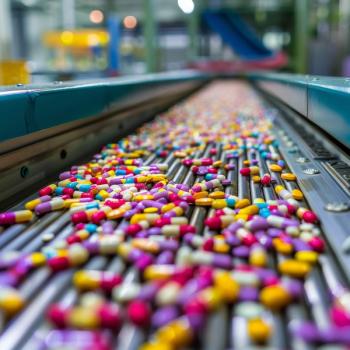
Global drug spending projected to hit $1.6 trillion in 2025
Forecast does not include spending on Covid-19 vaccines, according to IQVIA Institute for Human Data Science study
According to findings released last week from a new study by IQVIA, global spending on medicines—using invoice price levels—is expected to grow at a 3-6% compound annual growth rate (CAGR) through 2025 to reach about $1.6 trillion by 2025, not including spending on Covid-19 vaccines.
“While the pandemic has been extremely disruptive, the pre-pandemic forces of medicine use and spending remain significant drivers of the outlook, and these forces have only been modestly impacted by the immediate effects of Covid-19,” commented Murray Aitken, IQVIA's senior vice president and executive director of the IQVIA Institute for Human Data Science. “The success of countries around the world in implementing a global vaccination program—unprecedented in speed and scope—will be key to the outlook for all medicine use through 2025 and beyond.”
Highlights of the report include:
- Substantial global market variations: There are strong variations in medicine usage and spending across global markets. Growth in global drug spending will be lifted by stronger pharmerging market growth through 2025 and offset by developed markets where slower growth will result, as losses of exclusivity for original brands outweigh increased spending on newly launched innovative products.
- The US market: On a net price basis, the US market is forecast to grow 0-3% CAGR over the next five years, down from 3% CAGR for the past five years.
- Japan: As the third-largest global market, Japan will have flat-to-declining medicine spending as a result of the continued biennial price cut policy but see rising patent-protected original brand spending coinciding with policies to encourage a shift to generics for older medicines.
- Europe: Spending in Europe is expected to increase 2-5% CAGR or a total of $35 billion over the next five years to 2025.
- Novel medicines: The number of new active substances launches are also projected to continue at an above-average rate, with an average of 54–63 per year, totaling 290–315 for five years through 2025.
- Loss of brand exclusivity and rise in biosimilars: The impact of exclusivity losses will increase to $166 billion over the next five years mostly due to the availability of biosimilars, and the cumulative savings from biosimilars will reach an estimated $285 billion.
- Therapy area growth: The two leading global therapy areas—oncology and immunology—are each forecasted to grow 9-12% CAGR through 2025, lifted by significant increases in new treatments and medicine use.
Newsletter
Stay ahead in the life sciences industry with Pharmaceutical Commerce, the latest news, trends, and strategies in drug distribution, commercialization, and market access.





